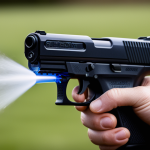Understanding Proprioceptive Training
Proprioception refers to the body’s ability to sense movement, action, and location. It’s crucial for athletes as it enhances coordination and balance, allowing for improved gymnastics performance. By honing proprioceptive skills, athletes gain better sensory feedback from their joints and muscles, which is vital for executing complex movements with precision.
Importance in Gymnastics Performance
Proprioceptive training is instrumental in enhancing an athlete’s balance and coordination. It involves exercises that focus on refining the body’s sensory feedback systems. This can result in more stable landings, precise positions, and fluid transitions, all essential to excelling in gymnastics.
Also read : Triathlon Transition Mastery: Proven Strategies to Accelerate Your Race Segments
Injury Prevention and Recovery
This type of training is beneficial not only for skills enhancement but also in injury prevention and recovery. By improving neuromuscular control, athletes are less prone to missteps that could lead to injuries. Additionally, if injuries occur, proprioceptive exercises can expedite rehabilitation by restoring strength and awareness faster.
Proactive Approach
Incorporating proprioceptive training is a proactive approach to bolster a gymnast’s athletic capabilities. It is vital for both emerging athletes and seasoned professionals looking to maintain their competitive edge while safeguarding their long-term health and performance.
This might interest you : Turbocharge Your Triathlon: Essential Tips to Speed Up Transition Times and Boost Race Performance
Benefits of Proprioceptive Training for Gymnasts
Engaging in proprioceptive training offers numerous athletic benefits for gymnasts, starting with enhanced core strength. A solid core is pivotal in maintaining effective control during complex routines, allowing gymnasts to execute challenging movements with precision and grace.
Furthermore, proprioceptive training significantly improves balance, a key component in gymnastics performance. With better balance, athletes can maintain stability through intricate manoeuvres, reducing the likelihood of missteps and falls. Activities like balance board exercises and stability ball workouts contribute to this enhanced stability, promoting overall athletic safety and efficiency.
Developing heightened body awareness is another advantage, aiding gymnasts in recognising and adapting to their spatial environment quickly. This increased awareness enables them to adjust instantly during performances, leading to smoother and more reliable skills execution.
The long-term benefits of proprioceptive training are equally substantial. By continuously honing these skills, gymnasts can extend their athletic longevity, maintain competitive levels, and prevent long-term injury by fostering robust neuromuscular control. Embracing these training methods not only maximises immediate performance but also secures enduring physical health and capability in the demanding realm of gymnastics.
Key Proprioceptive Exercises for Gymnasts
Incorporating proprioceptive exercises into a gymnast’s training routine is essential for optimal skill development. These exercises improve sensory feedback and can be tailored to specific needs.
Balance Board Exercises
Engaging with balance board exercises is a powerful way to enhance neuromuscular control, crucial for gymnastic performance. By challenging stability, these exercises help refine balance and coordination skills. Start with 3 sets of 10-15 seconds, gradually increasing duration as proficiency improves.
Stability Ball Training
Stability ball training targets core strength and body awareness. For gymnasts, using a stability ball can simulate the dynamic movements performed during routines. Exercises such as stability ball rollouts or plank holds on the ball are effective, ideally performed in 3 sets of 8-12 repetitions. This helps in developing a solid core that is indispensable for executing complex gymnastics skills.
Single-leg Exercises
Single-leg exercises, like single-leg squats or calf raises, engage specific muscle groups and significantly boost balance improvement. These exercises challenge the gymnast’s proprioceptive system by requiring greater muscular control and stability. Perform 2-3 sets of 10-12 reps, ensuring proper form to maximize benefits and progression.
Scientific Background of Proprioceptive Training
The effectiveness of proprioceptive training is backed by a wealth of scientific evidence, underscoring its role in enhancing athletic performance. Research studies have demonstrated that this type of training significantly improves neuromuscular control, which is crucial for gymnastics performance. By engaging the brain’s sensory-feedback systems, athletes experience not only improved coordination but also heightened responsiveness to physical demands.
Neurologically, proprioceptive training stimulates the mechanoreceptors in muscles and joints, leading to faster transmission of sensory information. This mechanism enables athletes to execute complex actions with greater precision and adaptability by refining their body’s ability to react to unexpected movements or forces.
Comparative studies highlight the superiority of proprioceptive exercises over traditional training methods. In athletes who regularly engage in proprioceptive routines, results indicate measurable improvements in both athletic benefits and performance metrics. Enhanced balance and reduced injury risk are repeatedly cited as key advantages.
Ultimately, proprioceptive training’s foundation in scientific research not only validates its inclusion in training regimens but also assures gymnasts and coaches of its long-term value. It harmoniously integrates advanced knowledge of body mechanics with practical applications, promoting superior skill development and athletic potential.
Testimonials and Case Studies
Real-world examples of gymnasts benefiting from proprioceptive training spotlight its transformative impact. For instance, Elite gymnast Emily Carter improved her floor routine execution through consistent proprioceptive work, citing significant gains in balance and precision. Her success story exemplifies how such training not only refines skills but elevates overall gymnastics performance.
Coaches and trainers, like Coach Morgan Davis, emphasize the integration of proprioceptive exercises for enhancing spatial awareness and sensory feedback. When asked how it affects core strength, Coach Davis explains that targeted exercises bolster the central musculature vital for complex movements. Acknowledging its pivotal role, he notes, “Proprioceptive training aligns athletes with their physical environment, intensifying their adaptability to dynamic routines.”
Expert insights come from experienced trainers who implement these exercises, validating their effectiveness through performance metrics. Case studies reveal marked improvements in post-training assessments, underscoring reduced injury rates and heightened athletic proficiency. This real-life data affirms the pivotal role proprioceptive training plays in fostering athletic growth and safety.
These success stories and observations fortify the argument for integrating proprioceptive techniques, portraying a compelling narrative of enhanced athletic benefits achieved through dedicated practice.
Visual Demonstrations of Proprioceptive Training
Incorporating visual aids can significantly enhance the understanding and execution of proprioceptive exercises. Seeing exercises demonstrated correctly can bridge the gap between theory and practice, ensuring athletes perform movements accurately.
Video Tutorials for Key Exercises
Video tutorials serve as an excellent resource, offering a step-by-step guide to key training techniques. These videos illustrate proper form, highlight common mistakes, and suggest variations suitable from beginners to advanced gymnasts. They effectively cater to diverse learning styles, helping viewers visualize and internalize the mechanics of each movement.
Infographics Summarising Key Principles
Infographics distill complex concepts into easily understandable visuals. By summarizing the core principles of skill development and exercises, they provide quick-reference guides that reinforce learning. Infographics can outline the benefits, depict set and repetition recommendations, and show progression pathways, acting as handy reminders during training sessions.
Progress Tracking Charts
Utilising progress tracking charts fosters motivation and allows athletes to monitor improvements in athletic performance over time. These charts can include metrics like increased control, stability, and enhanced sensory feedback. Tracking progress in this structured manner promotes consistency and highlights the tangible benefits of incorporating proprioceptive training into routines.
Practical Tips for Implementing Proprioceptive Training
Successfully integrating proprioceptive training into an athlete’s routine enhances overall gymnastics performance. To incorporate these exercises effectively, ensure a gradual inclusion, allowing athletes to adapt progressively. Begin with basic exercises and increase complexity as proficiency improves.
When designing training plans, customise exercises to target the specific needs of the gymnast. Doing so not only aligns with individual athletic requirements but also maximises the training benefits. Tailored sessions can focus on enhancing balance, core strength, or specific neuromuscular control skills, fostering a personalized and effective development path.
Coaching Strategies
Coaches should adapt exercises to cater to various skill levels, from beginner to advanced. For beginners, focus on foundational exercises like simple balance board routines. As athletes’ skills improve, introduce more challenging tasks such as stability ball workouts. Consistency in training and encouragement from coaches can boost confidence and improve outcomes.
Be aware of potential pitfalls, such as overtraining or improper form, which can hinder progress or lead to injury. Regularly monitor athletes’ technique and adjust exercises to ensure safe and efficient execution. By adhering to these guidelines, gymnasts can harness the full potential of proprioceptive training, advancing their athletic performance.


